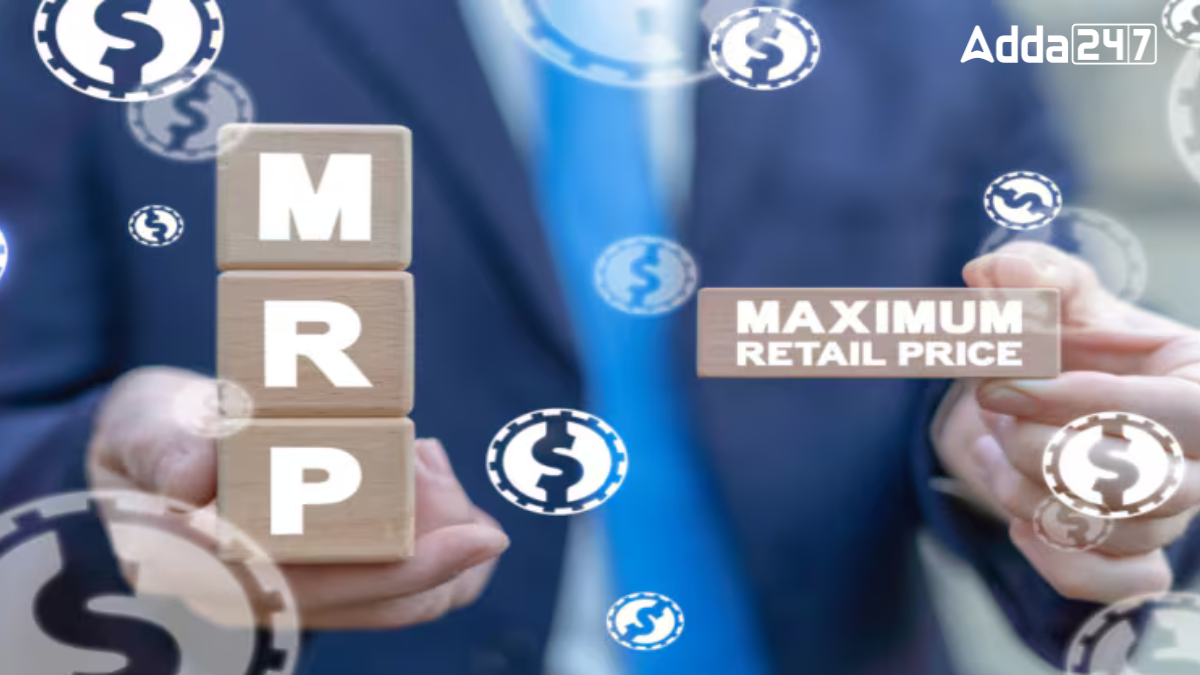The Maximum Retail Price (MRP) is a pricing mechanism introduced in India to prevent overcharging by retailers and protect consumers from exploitation. It ensures that manufacturers set a cap on the price of packaged goods, which retailers cannot exceed. MRP was first introduced in 1990 under the Standards of Weights and Measures Act and later revised with further regulations to adapt to market changes. Despite its good intentions, the concept has been criticized as outdated and rigid, particularly in today’s more liberalized market economy.
Full Form of MRP
The full form of MRP is Maximum Retail Price. It represents the highest price that can be charged for a product in India, including all taxes. MRP ensures that consumers are not overcharged, as retailers cannot sell the product for more than this printed price.
What is MRP?
MRP, or Maximum Retail Price, is the highest price that can be charged for a product in India. It includes the cost of production, shipping, and applicable government taxes. Although retailers can sell the product at a price lower than the MRP, they cannot charge more than what is printed on the package. This rule was introduced to protect consumers from being overcharged by retailers, especially in tourist areas and regions with fewer product choices.
How is MRP Determined?
Manufacturers set the MRP after considering all the costs involved in making and selling the product. Here are the main factors that affect MRP:
- Production Costs: This includes the cost of raw materials, labor, and equipment needed to produce the item.
- Transportation and Storage: The cost of moving the product from the factory to the store and keeping it in storage.
- Profit Margins: Both the manufacturer and the retailer need to make some profit, so they add a margin to cover their costs.
- Taxes: MRP includes all taxes applied to the product, so you don’t have to pay extra later.
Factors Influencing MRP
- Manufacturing Costs: The cost of making the product, including materials and labor, directly affects the MRP.
- Packaging and Branding: Products with attractive packaging or well-known brands may have a higher MRP because of the added value.
- Transportation and Logistics: The cost of transporting the product to different locations is included in the MRP.
- Taxes and Duties: Government taxes and duties on the product are also factored into the MRP.
- Profit Margin: Manufacturers and retailers need to make a profit, so they add a margin to the MRP.
- Market Demand and Competition: If the demand for a product is high or if there is less competition, the MRP might be set higher.
- Regulatory Compliance: Government regulations may require certain standards that affect the production cost and, in turn, the MRP.
Key Features of MRP
- Protecting Consumers: MRP helps protect consumers by showing the highest price they can legally be charged for a product. It helps people know how much they should pay when shopping.
- Price Transparency: The MRP printed on the product makes it easy for customers to see the maximum price they’ll pay. This helps them make smarter shopping choices.
- Prevents Price Overcharging: MRP stops shops from unfairly raising prices, especially on important everyday items.
Effects and Importance of MRP
- Protecting Consumers: MRP ensures that consumers aren’t overcharged and helps stop sudden price hikes.
- Consistent Pricing: With MRP, prices for the same product stay similar across regions and sellers.
- Helps in Comparing Prices: Consumers can use MRP to compare prices of different brands and products, making it easier to choose based on value.
- Legal Protection: If manufacturers or retailers break MRP rules, they can face legal action, ensuring fair pricing.
Criticism of MRP, Maximum Retail Price
- Limits Free Market: Some believe MRP restricts free competition because manufacturers set prices, limiting how much profit shops can make.
- Workarounds and Hidden Costs: Shops might add extra charges, like a cooling fee for cold drinks, raising the price above the MRP. Some manufacturers also set high MRPs, much higher than what the product normally sells for.
- Challenges in Rural Areas: In rural areas, higher transportation costs might mean shops struggle to make profits if they can’t charge a bit more than the MRP.




 What is the Full Form of DRI?
What is the Full Form of DRI?
 GMT Full Form: Know Its Meaning, Formati...
GMT Full Form: Know Its Meaning, Formati...
 DNA Full Form: Know Its Meaning, Structu...
DNA Full Form: Know Its Meaning, Structu...







